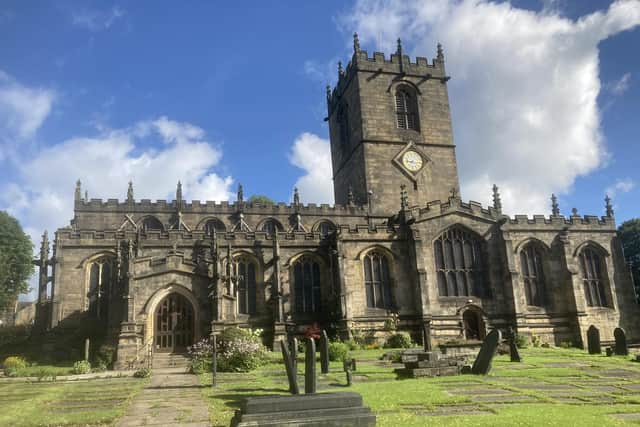Bones to be re-interred at Yorkshire churchyard after discovery during works
Whilst improvements to disabled access were being made in the churchyard of St Mary’s in Ecclesfield, near Sheffield, seven skeletons were amongst the items found in the ground.
Most of the visible Grade I listed church building seen today date from the fifteenth century, and the skeletons are believed to come from later than this. However, stones forming the shaft of a standing cross discovered alongside the skeletons are believed to pre-date the Anglo-Saxon period.
Advertisement
Hide AdAdvertisement
Hide AdKnown since the seventeenth century as the “Minster of the Moors”, St Mary’s is unusually large for a village church, owing to its long history. A Norman priory was established on the site in the eleventh century.


As a listed building on an ancient site, archaeologists must be employed whenever work is done on the churchyard, to make sure discoveries like these are captured. The bones have been examined by the University of Sheffield’s archaeology department, and will be re-interred in a special service on Wednesday March 20, using the seventeenth century burial rite which was originally used.
Revd Tim Gill, Vicar at St Mary’s Ecclesfield, said: “First and foremost, we remember these are human remains that need to be treated not as a spectacle. They need to be buried decently and prayerfully. When they're reinterred, they'll be given full Christian burial rites. It would be very easy to turn it into some sort of circus, but it isn't that at all.
“Of course, there is interest because the discovery itself is unusual. In fact, I couldn't find anyone who had ever done this before. The archaeologist told me that, given the bodies were buried very close to the church, they were probably significant people. They may be people who had some sort of significance in terms of their faith.
Advertisement
Hide AdAdvertisement
Hide Ad“In the research I did, I discovered that we are supposed to bury them with a service as close as possible to the service that would have been for the original funeral. I'll be using the 1662 burial rite in full.”
Comment Guidelines
National World encourages reader discussion on our stories. User feedback, insights and back-and-forth exchanges add a rich layer of context to reporting. Please review our Community Guidelines before commenting.
